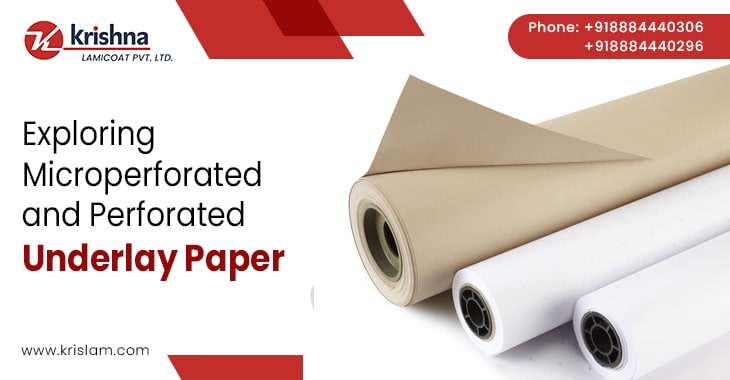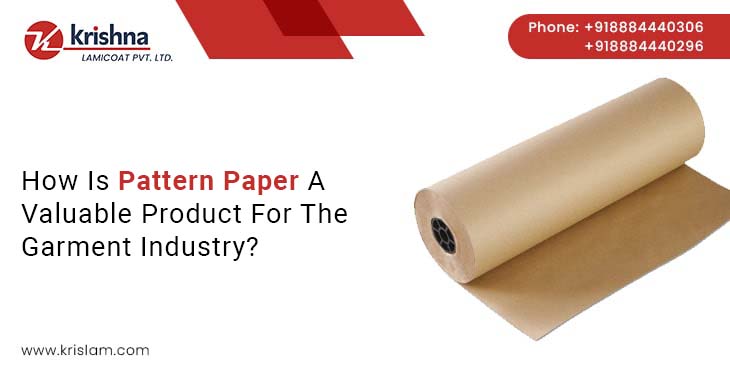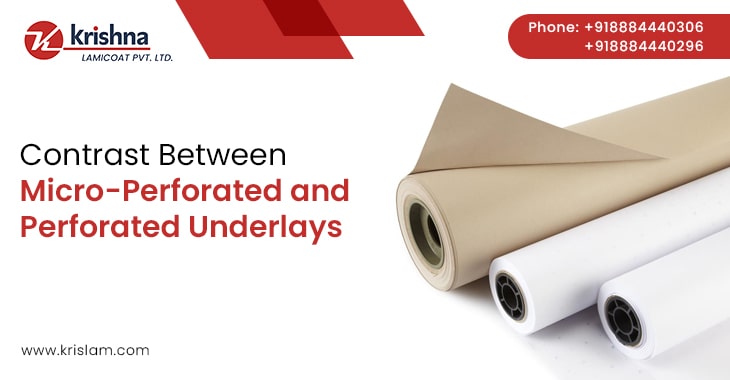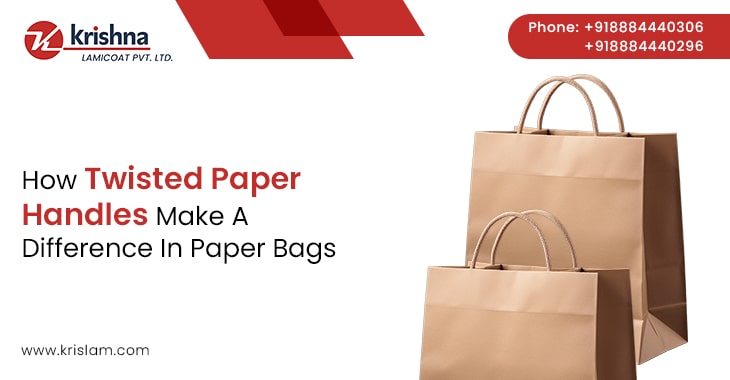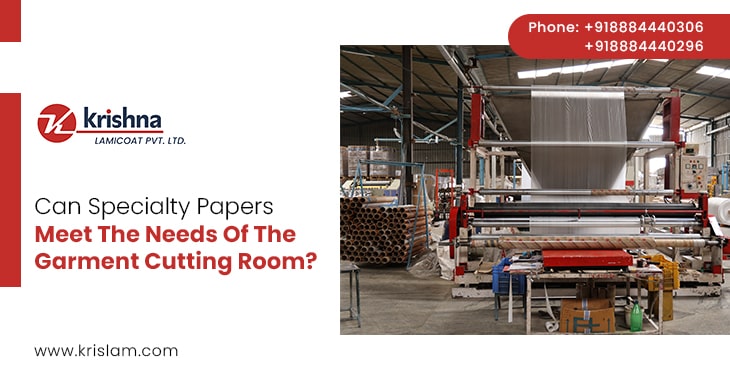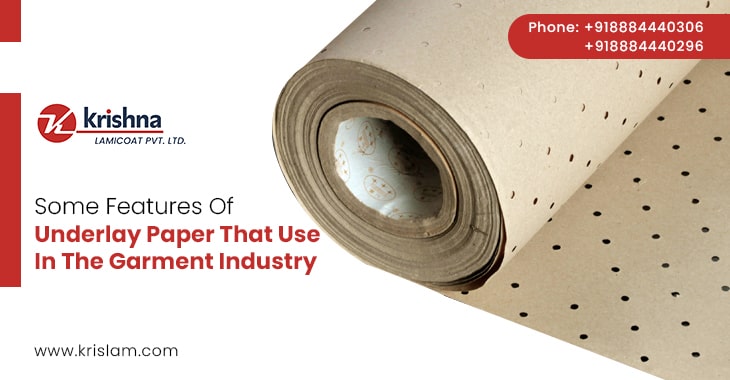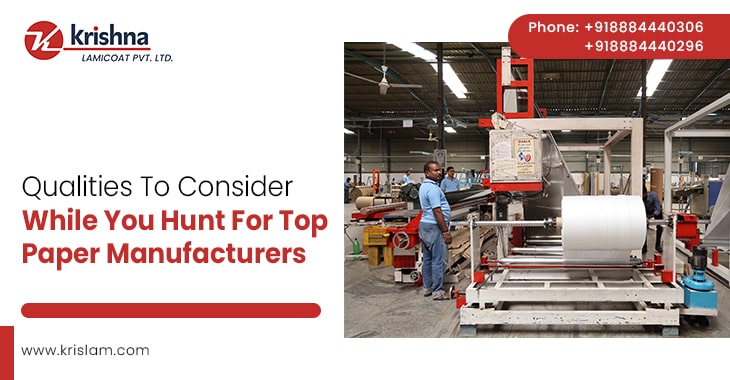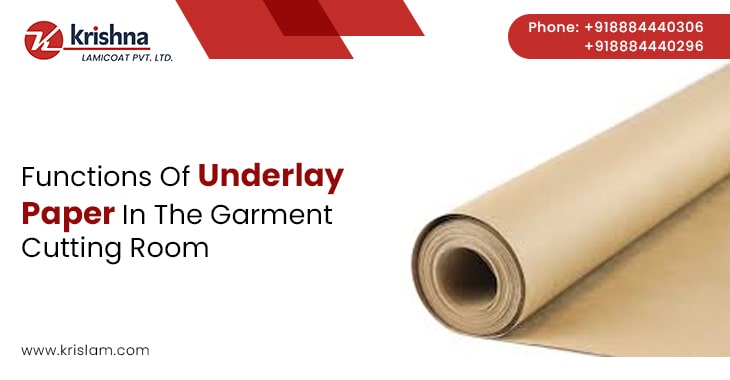
In the garment industry, precision is key to producing high-quality apparel. The cutting room is the heart of garment manufacturing, where intricate patterns are transformed into tangible pieces. Though often overlooked, Underlay Paper plays a pivotal role in this process. This paper is a specialized type designed specifically for the garment industry’s cutting room. It provides support and stability during cutting, ensuring precise and consistent results. This paper is typically translucent and lightweight, making it ideal for layering beneath fabric during cutting operations.
If you are in the garment industry and want high-quality underlay or Microperforated Paper, contact Krishna Lamicoat today. We are one of the Top Specialty Paper Manufacturers in India that provides the best quality underlay paper at affordable prices. Apart from underlay paper, we manufacture specialty papers like Pattern Paper, Plotter Paper, etc.
This blog will explore some functions of Underlay Paper and its significance in the garment industry’s cutting room. Let’s delve into the details.
- Pattern Stabilization
- Reducing Friction
- Preventing Material Stretching
- Absorbing Vibrations
- Enhancing Layered Cutting
- Optimizing Material Usage
- Facilitating Tracing and Marking
- Preventing Adhesive Transfer
- Supporting Delicate Fabrics
- Promoting Precision in Notching
Pattern Stabilization:
Underlay paper serves as a stable foundation for the fabric during cutting. It prevents shifting or distortion of the material, ensuring that patterns are accurately reproduced onto the fabric.
Reducing Friction:
By creating a smooth surface between the cutting table and the fabric, underlay paper minimizes friction. It allows for smoother movement of the cutting equipment, resulting in cleaner and more accurate cuts.
Preventing Material Stretching:
Fabrics, especially knits and stretchy materials, can be prone to stretching during cutting. Underlay Paper helps distribute pressure evenly, reducing the risk of distortion or misalignment.
Absorbing Vibrations:
Vibrations from cutting equipment can sometimes affect the accuracy of cuts. Underlay paper acts as a cushion, absorbing these vibrations and ensuring the fabric remains stable.
Enhancing Layered Cutting:
In the case of layered cutting, underlay paper provides separation between fabric layers. It allows for cleaner and more precise cuts, especially when working with multiple layers of different materials.
Optimizing Material Usage:
Underlay paper has grids or dots that guide creating markers. These markers are layout plans that help optimize material usage, reduce waste, and improve cost-effectiveness.
Facilitating Tracing and Marking:
Underlay paper’s translucent nature makes it suitable for tracing patterns and making markings. It is especially useful for complex patterns or when adjustments need to be made to the fabric.
Preventing Adhesive Transfer:
In cases where fabric is bonded with adhesive materials, Underlay Paper acts as a barrier. It prevents any adhesive residue from transferring onto the cutting table or equipment.
Supporting Delicate Fabrics:
Delicate or lightweight fabrics may be more susceptible to damage during cutting. Underlay paper provides an added layer of protection, ensuring the protection of these fabrics.
Promoting Precision in Notching:
Underlay paper allows for precise notching, which involves cutting small notches or marks into the fabric to aid assembly. It ensures that pieces fit together accurately during the sewing process.
End Note
Underlay paper may seem humble in the garment cutting room, but its functions are far-reaching and essential for achieving precision and efficiency. By stabilizing patterns, reducing friction, and optimizing material usage, underlay paper plays a crucial role in producing high-quality apparel. It’s a testament to the intricate planning and attention to detail that goes into every garment we wear. Next time you wear a well-fitted piece of clothing, remember the unsung hero – the underlay paper. If you are looking for the best-quality Underlay Paper for your garment business, reach out to Krishna Lamicoat, one of the Top Specialty Paper Manufacturers in India today.
 An ISO 9001 and Govt. recognised Star Export house
An ISO 9001 and Govt. recognised Star Export house
